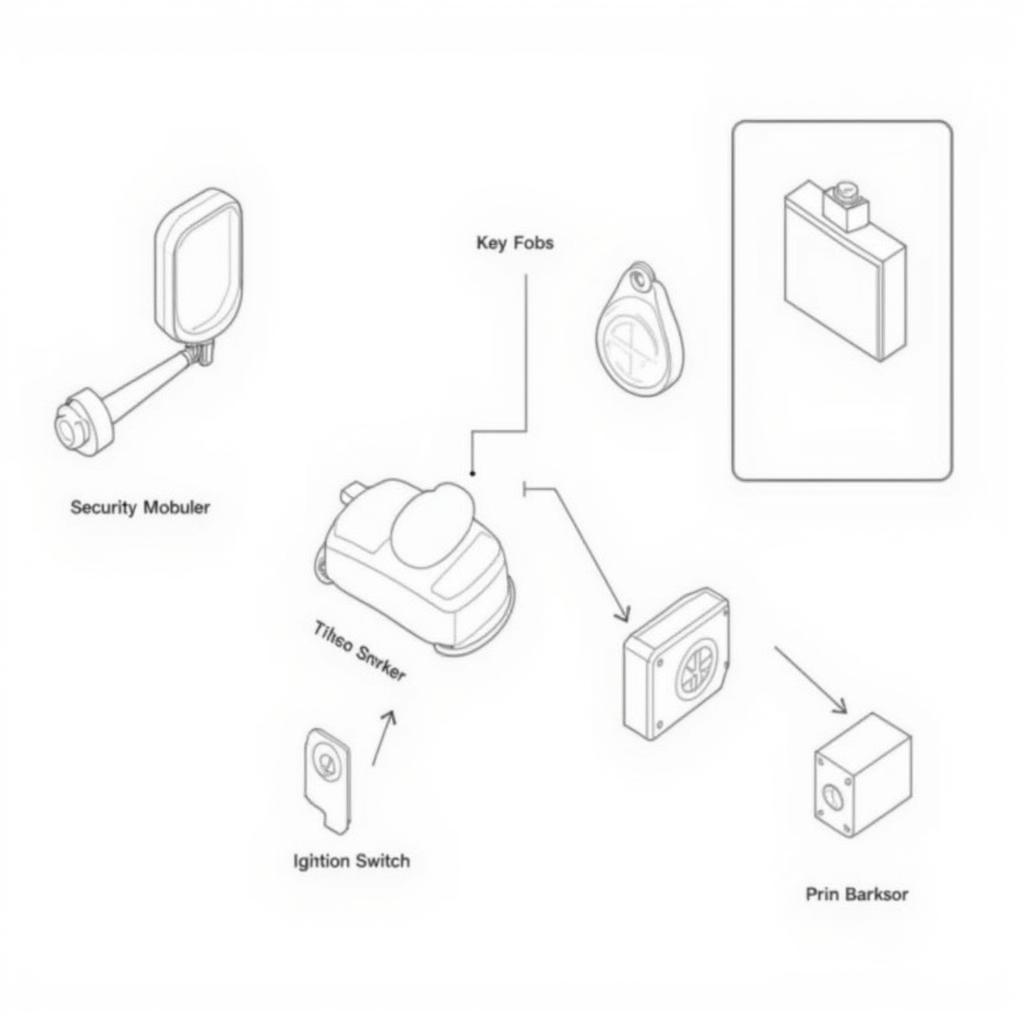Tesla battery drain in hot weather can be a frustrating experience, leaving you stranded or with range anxiety. This article dives into the reasons why your Tesla battery might be draining faster in hot weather and provides practical solutions to mitigate this issue. tesla low voltage battery warning
Why Does My Tesla Battery Drain Faster in the Heat?
Several factors contribute to increased Tesla battery drain in hot weather. Like any battery, Tesla’s lithium-ion batteries are sensitive to temperature extremes. High temperatures can accelerate chemical reactions within the battery, leading to increased self-discharge. Your Tesla also works harder to maintain its ideal operating temperature in hot weather, consuming energy to power the cooling system for the battery and cabin.
Additionally, features like Sentry Mode and Cabin Overheat Protection, while beneficial, can draw power and contribute to battery drain, especially when parked in direct sunlight. Preconditioning the cabin before you enter can also use more energy in hot weather.
Minimizing Tesla Battery Drain in Hot Weather: Practical Tips
Fortunately, there are several steps you can take to minimize Tesla battery drain during hot weather. Parking in the shade or a garage whenever possible is a simple yet effective way to reduce the impact of direct sunlight on your battery.
 Tesla Parked in Shade Conserving Battery
Tesla Parked in Shade Conserving Battery
Limiting the use of power-hungry features like Sentry Mode and Cabin Overheat Protection when parked for extended periods can also help conserve battery power. While preconditioning is helpful, scheduling it to finish just before your departure minimizes unnecessary energy consumption.
“Preconditioning is a great feature,” says John Miller, Senior Automotive Electrical Engineer at EV Diagnostics Inc., “but timing it right is key to maximizing its benefits without excessive battery drain. Setting it to finish just before you need the car is the most efficient approach.”
Optimizing Charging Strategies for Hot Weather
Optimizing your charging habits is another crucial aspect of managing battery drain in hot weather. Avoid charging your Tesla to 100% unless you plan to embark on a long trip immediately. Maintaining a lower state of charge, around 80-90%, can reduce stress on the battery and minimize degradation in hot weather.
Moreover, consider charging your Tesla during cooler periods, such as overnight or early in the morning, when temperatures are lower. This reduces the strain on the battery during the charging process and maximizes efficiency. “Charging overnight is not only convenient, but it’s also gentler on your battery in hot weather,” advises Dr. Emily Carter, Lead Battery Researcher at Green Energy Solutions. “The cooler temperatures allow for more efficient charging and reduce the risk of overheating.”
Understanding Software Updates and Battery Performance
Tesla regularly releases software updates that can impact battery performance. Staying up-to-date with the latest software ensures your Tesla is running with the most optimized energy management strategies, potentially mitigating battery drain issues in hot weather. You can also check for potential issues with reasons for dead battery.
Conclusion
Tesla battery drain in hot weather is a common concern, but by understanding the contributing factors and implementing the strategies outlined in this article, you can significantly reduce its impact. From parking strategies and feature management to charging optimization and software updates, proactive steps can help you maintain optimal battery performance and enjoy a worry-free driving experience even in the hottest conditions. Consider checking our guide on tesla battery completely dead for more tips. Also, general tips for car battery drain in hot weather may also be helpful. Remember that being mindful of your Tesla’s energy consumption in hot weather is key to preserving battery health and maximizing range.


